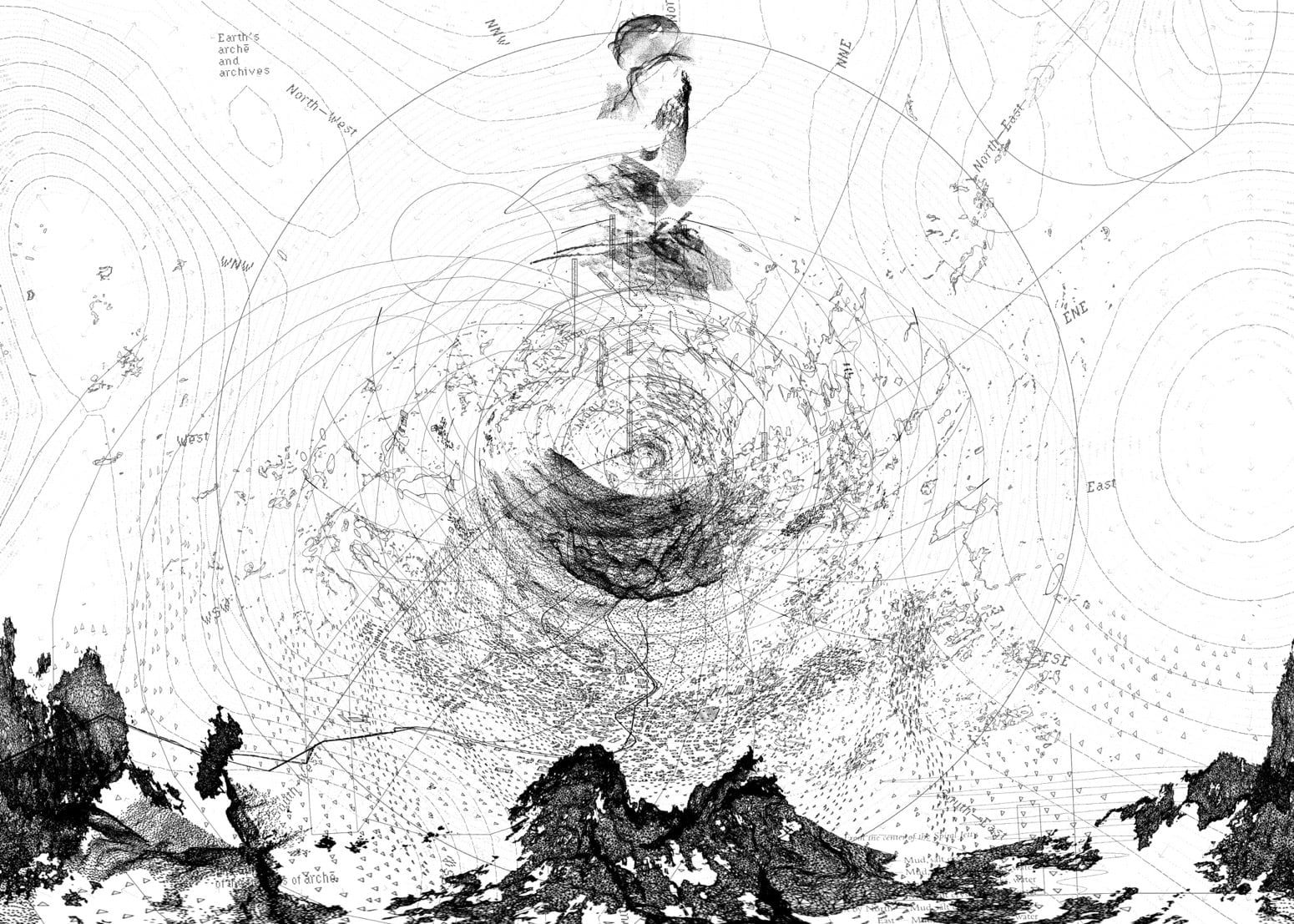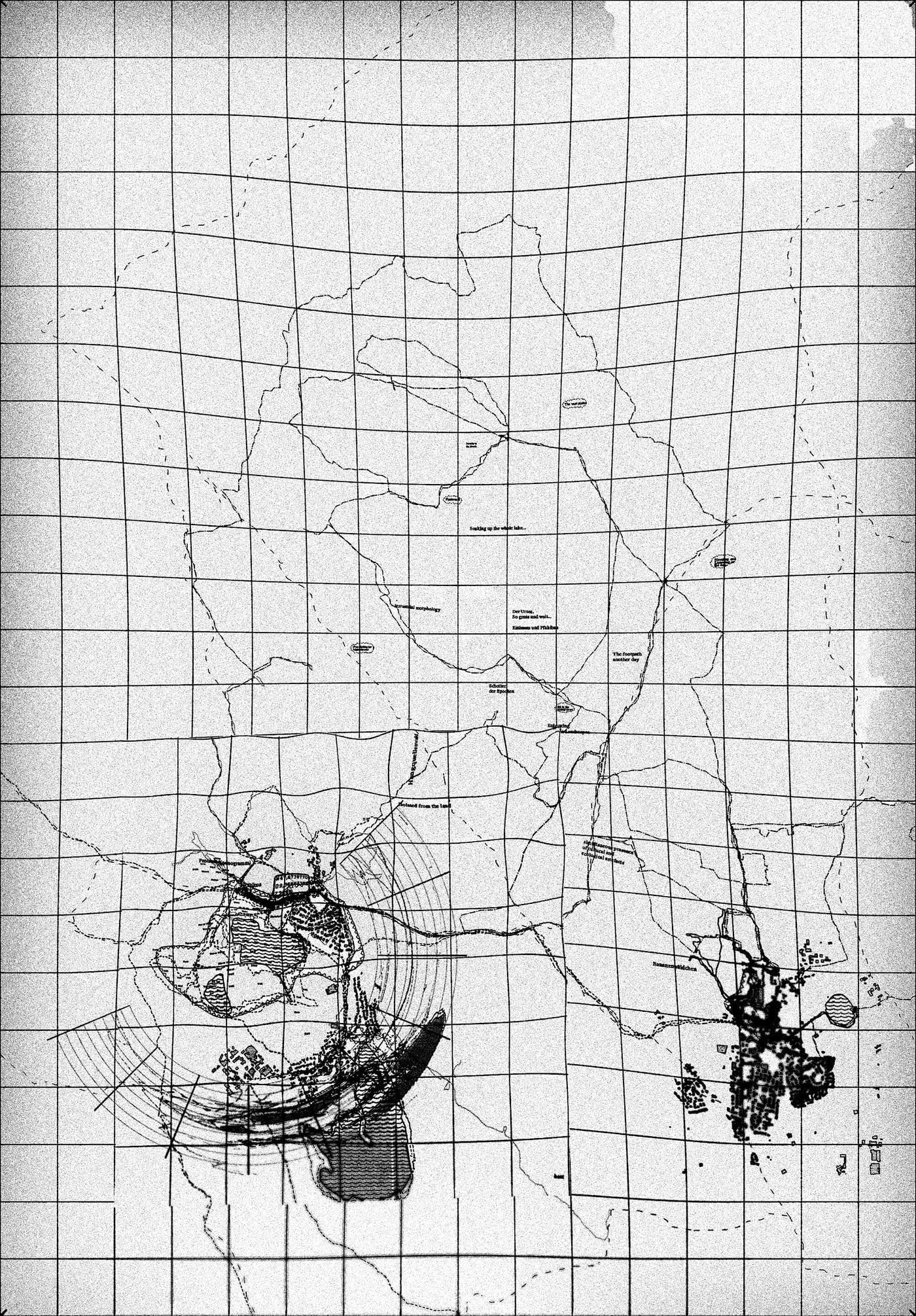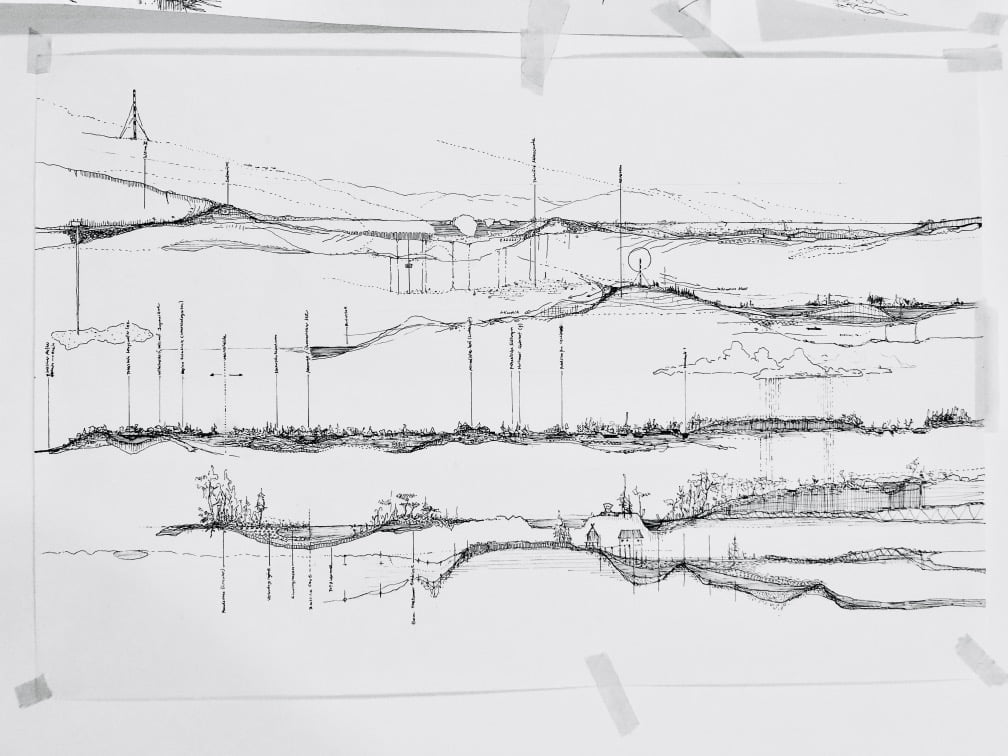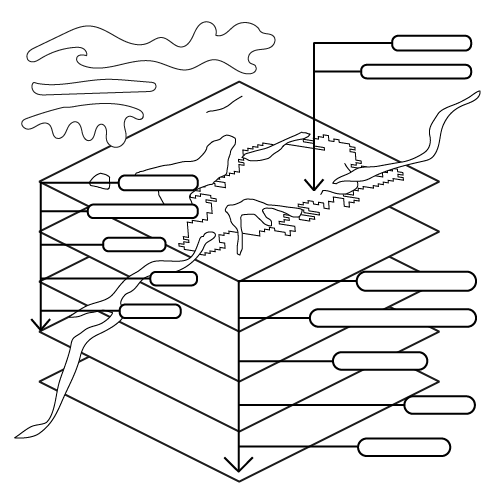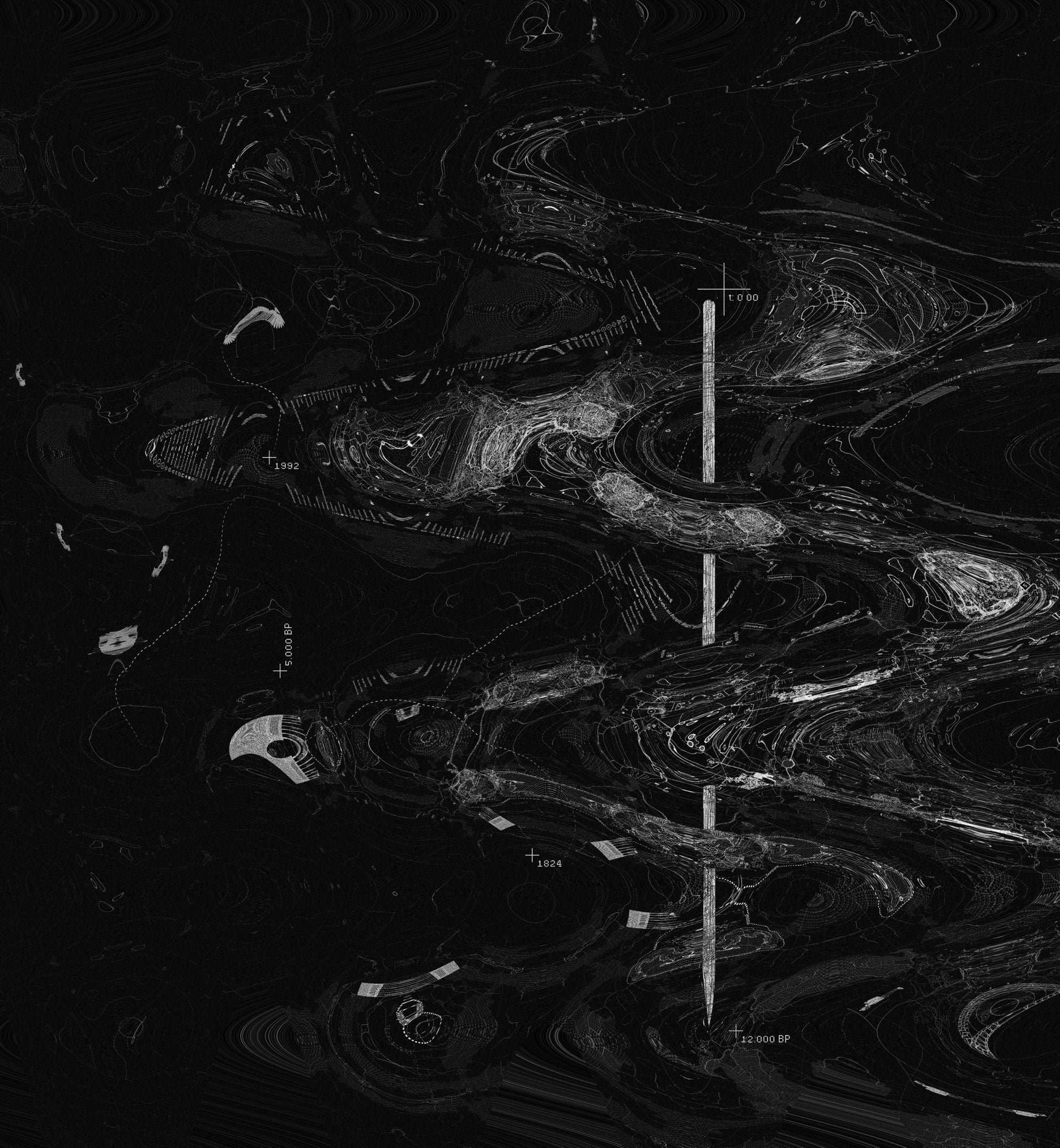
Weaving Threads:
Mapping as narrative method
“Landschaft aber ist Teil der Lebenswelt und ihrer Narrative. Diese umfassen literarische oder künstlerische Darstellung von Landschaft ebenso wie alltägliche Wegbeschreibungen, Routenverläufe, Erzählungen gewöhnlicher »Praktiken im Raum« (Michel de Certeau) sowie empirische Narrative der Landschaft, die das von den Geo- und Klimawissenschaften, der Botanik und Zoologie akkumulierte Wissen in einen anschaulichen Zusammenhang bringen.”1Röhnert, Jan. Vom Gehen im Karst. Naturkunden No 73, Berlin 2021. p. 23.
If the moor, as our field of research, represents the physical archive of the ‘first order’ and initial resource (referring to the strata of peat and its archival properties, as well as the stories and myths connected to it), the Atlas and its mappings could be thought as a ‘secondary archive’ into which these narratives embedded in the peat are to be transferred. The transcription already occurs when shapes and edges (fields, ditches, pathways, forest seams, water surfaces, …) that are structuring the landscape are abstracted into lines, hatches, and polygons in the mapping that expands by biographical annotations and additional place-related events that are narrated in the framework of a chapter. In this sense, the work experiments with the transfer, translation and intentional transcription errors that reflect the fantastic but distorted nature of one’s inner landscapes. While the ‘first layer’ archive consists of peat, earth and minerals, sprinkled with water bodies, thickets, atmospheres, habitats and architectural fragments but also the cultural memory and collective knowledge, the ‘secondary archive’ here consists of the Atlas’ notes, drawings and drawing files, photos, models and last but not least the invisible part of merely imagined or remembered information, lost files, and performative approaches. Chapters of the book could represent individual spaces in which specific information about the place can be stored and curated, like in different museum exhibition rooms. Footnotes, cross-references and photographs symbolise shortcuts, footpaths and portals into deeper dimensions, as they are also often found in the Ried landscape and are supposed to interconnect different thought spaces in a field of obscurity.
The cartographic archive is understood as a graphical matrix or a geographical framework into which the lines of various meanings and temporal horizons are interwoven, thus gradually creating a fabric with condensed territories, white (empty) spaces and confronting histories. Landscape and the bog, in particular, are considered here as a product of processes and narratives that take place at different scales and temporal ranges, sequences and periods. For the spatial interpretation and representation of a landscape’s narration, it is therefore essential to ask which frame or lens type is chosen to capture a certain point of time and place. Is it an ‘over-viewing’ photograph taken from an elevated position, a map showing only man-made borders and objects like properties, buildings and streets, or a single found object such as a stone or a lump of earth, or rather a scientific analysis of specific chemical conditions in the peat? All of these frames expose a subject that is always just a fragment of something overarching but also an individual representative that bears the possibility to unfold a narration about its place and origins on its own and opens up a field of possibilities between the singular and the multitude – between the individual and the collective (A droplet of water / a cloud / a whole lake).

Digital Presentation Tool (Unity)


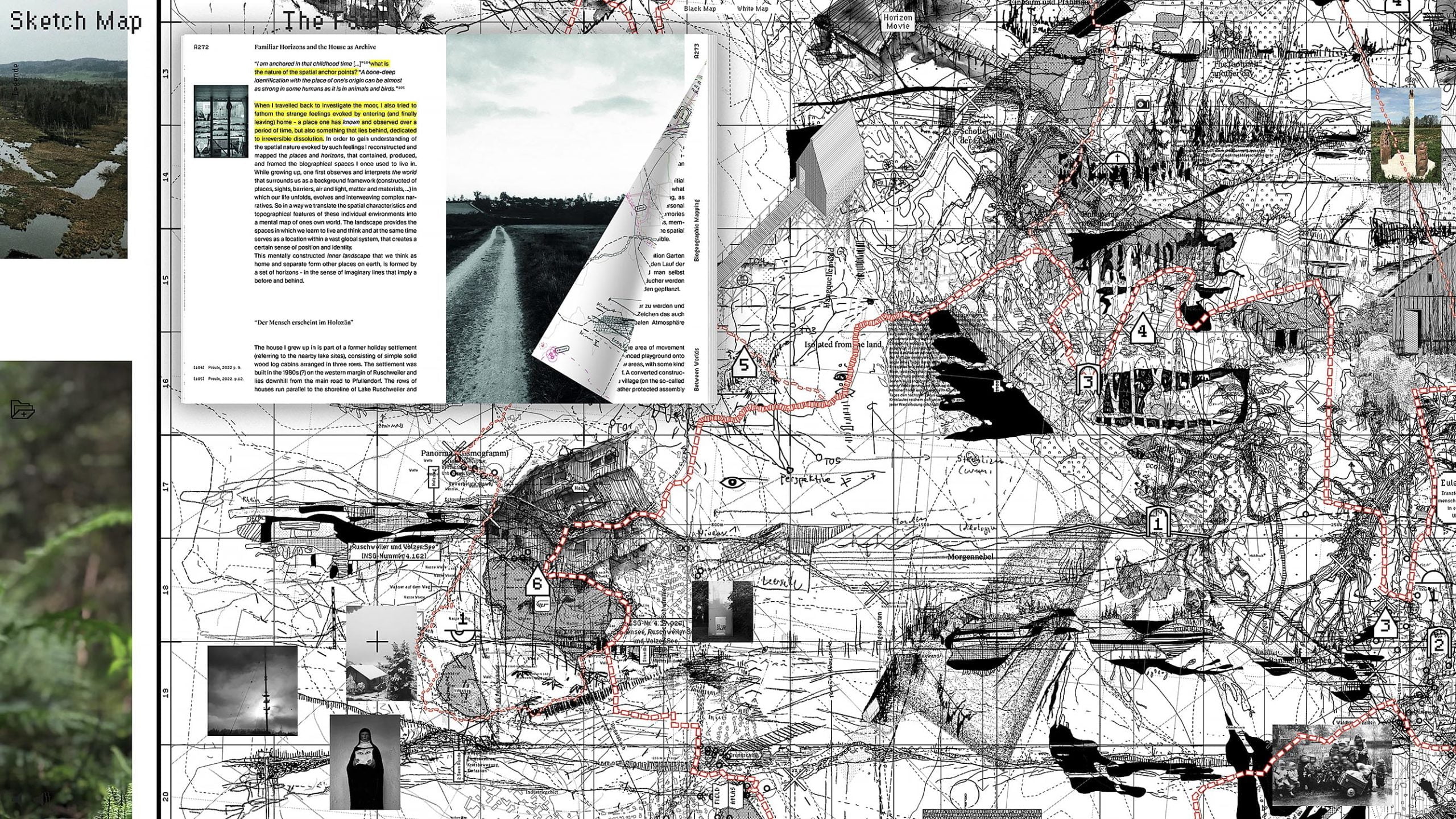

Mapping Experiments
